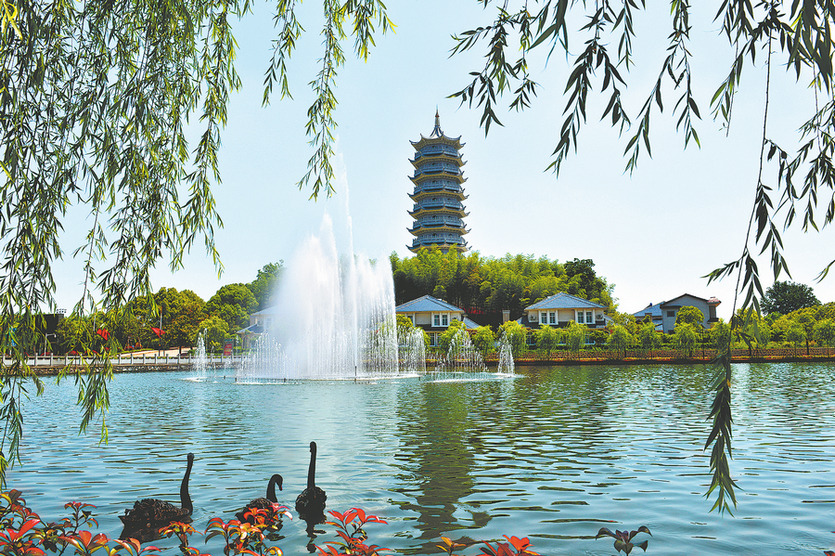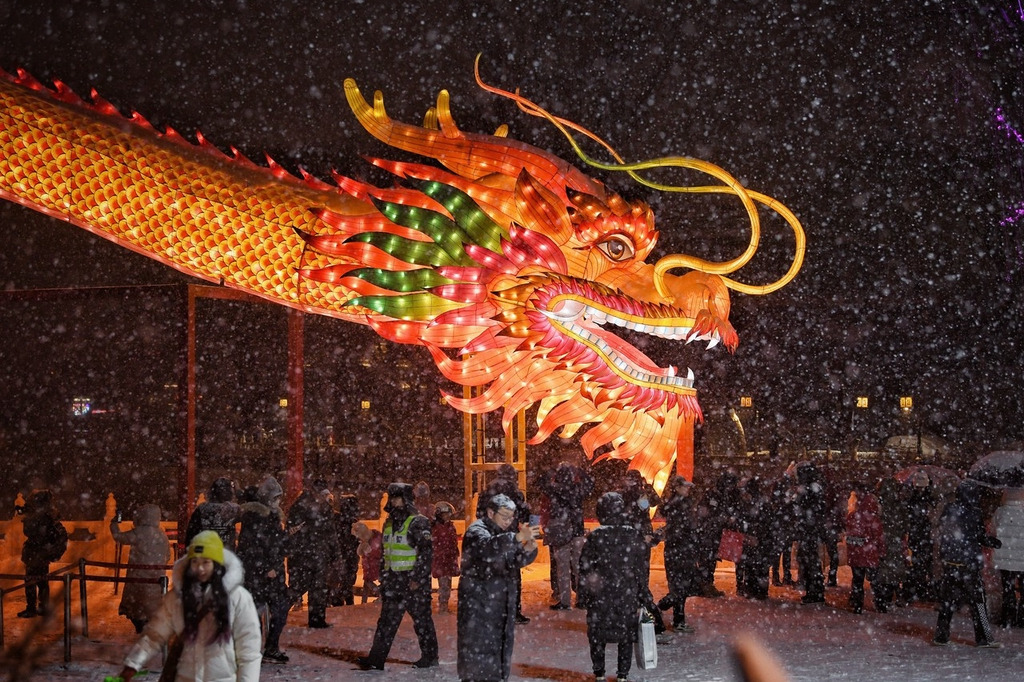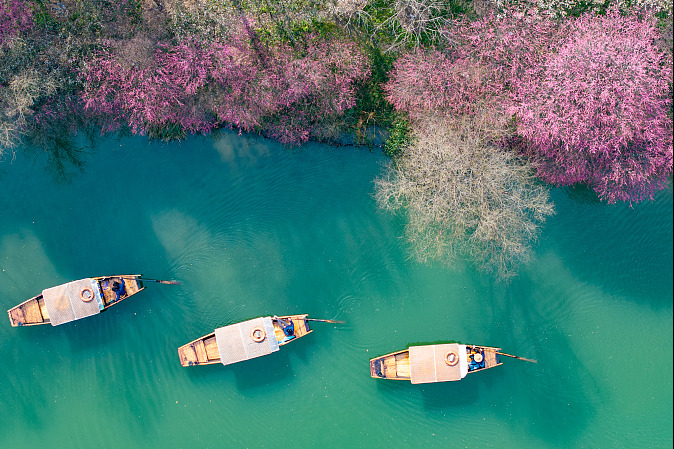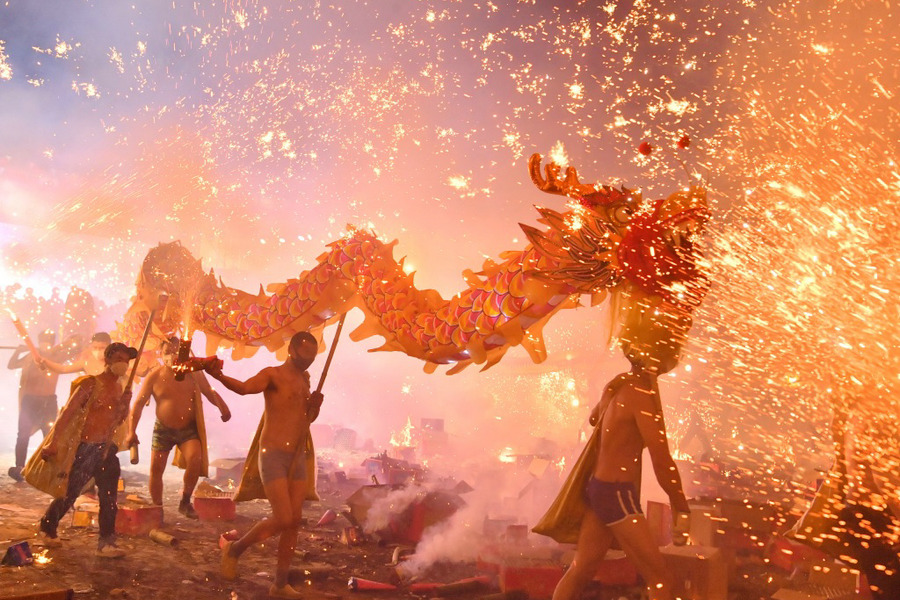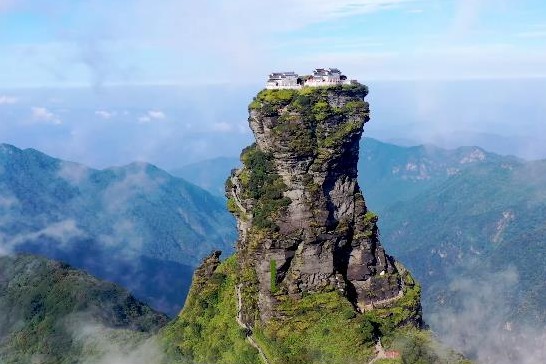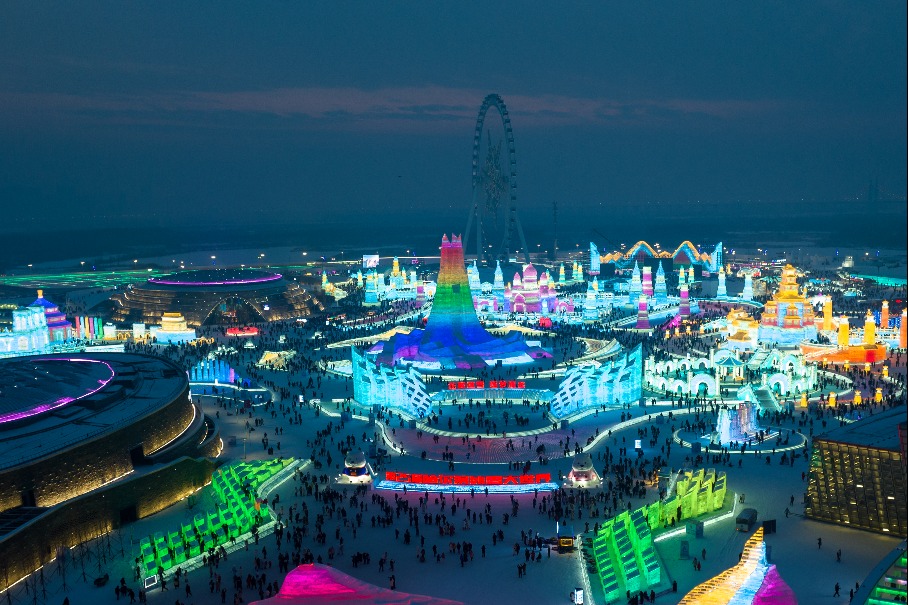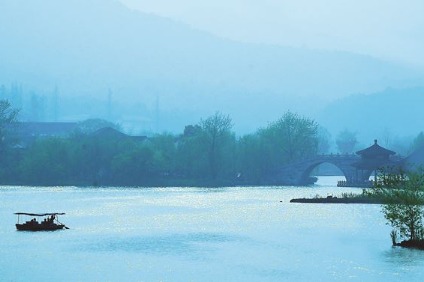Magical wonderland with a veil

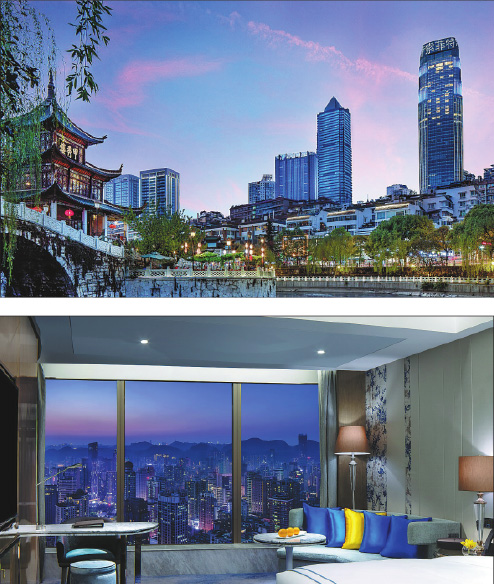
Guiyang features mountainous terrain and rich tradition, Liang Kaiyan reports.
With its long and narrow streets and buildings interspersed within jagged hills, Guiyang, the capital of Guizhou province, is like a wonderland with a veil.
Located in the Yunnan-Guizhou Plateau, Guiyang is regarded as the forest city of southeastern China. On the mountainous terrain, standing at the top of a building seems a much easier way to explore the metropolis.
Sofitel Guiyang Hunter, the tallest hotel in Guiyang, which stands 298 meters high, provides far-reaching city views.
Built in the center of Guiyang in 2017, the 60-story hotel has furnished all its rooms with floor-to-ceiling windows.
Its lobby on the 55th floor provides views of mountains to the east, of the cityscape to the west, and of scenic spots nearby Nanming River, the mother river of the Guiyang, and Jiaxiu Tower, a three-story pavilion built in the Ming Dynasty (1368-1644) to the south.
"I was curious when I heard of the hotel's lobby on the 55th floor and I just wanted to have a try," said Huang Min, who stayed at the Sofitel Guiyang Hunter during a business trip from Chongqing.
She said she had thought Guizhou was a remote frontier area where ethnic groups lived. "But after a quick look at Guiyang in the hotel, I could feel the city's modernity, as well as its history and culture."
Since its establishment last year, Sofitel Guiyang Hunter has stood out as a landmark in the city.
"Being the tallest hotel added to Guizhou's landscape, Sofitel Guiyang Hunter provides an ideal location and angle for our guests to take in the city," said Leng Jun, general manager of the hotel.
The Guiyang property shows the consistency in design styles of the Sofitel hospitality brand, founded in France in 1964, which has a focus on linking French elegance with local features.
"Guizhou possesses rich ethnic culture ... we try to add to it by mixing local features with French elements, to create something superlative," Leng said.
Designed by HBA, one of the biggest design firms in the United States, the combination of French influence and local characteristics runs throughout the hotel.
The design of the lobby floor was inspired by the Dafang lacquerware, a local traditional craft originating from the Ming (1368-1644) and Qing (1644-1911) dynasties.
The lobby walls are decorated with French characters and also with Miao ethnic silver accessories.
When it comes to catering, the hotel also offers both Chinese and French wines and cuisines. For example, Moutai liquor, China's top brand of baijiu, which is produced in Guizhou, has been added to cocktails and in the dishes.
He Qiwen, a tourist from Guangdong province, stayed in Guiyang for five days with her family. "We choose the hotel for its good service, authentic food and easy access to convenient transport," she said.
The tourist traveled to several places in Guizhou, including Bijie city and the villages of the Miao people.
"The weather is cool but we experienced a big difference in temperatures between morning and night," He said, adding that Guizhou is a must-see destination for enjoying its distinctive natural beauty and discovering the lifestyles of its ethnic groups.
As the local saying goes, it doesn't go more than three days without raining - and you won't find more than a square meter of flat land. The province's rugged terrain and the karst landforms create many natural attractions that appeal to visitors.
In Anshun, about 90 kilometers from Guiyang, lies the Huangguoshu Waterfall, which is one of the world's great waterfalls.
The 77.8-meter-high and 101-meter-wide natural feature, which is one of the biggest waterfalls in Asia, creates a different visual spectacular depending on the season.
From June to August every year, during the rainy season, the waterfall cascade reaches its peak. This is also the peak tourist season there.
Other natural features such as the Longgong (Dragon Palace) cave - the longest karst cave in China - and the Maling River Valley are also top tourist destinations in the province.
Wang Guangjin, a local tour guide, said Guizhou has preserved its environment and ethnic customs.
Guizhou is home to 48 minority groups, including the Miao and Dong peoples, most of whom live in the east of the province. The minorities have been preserving their customs, so visitors can still feel their tradition through their costumes and stone houses, Wang said.
















